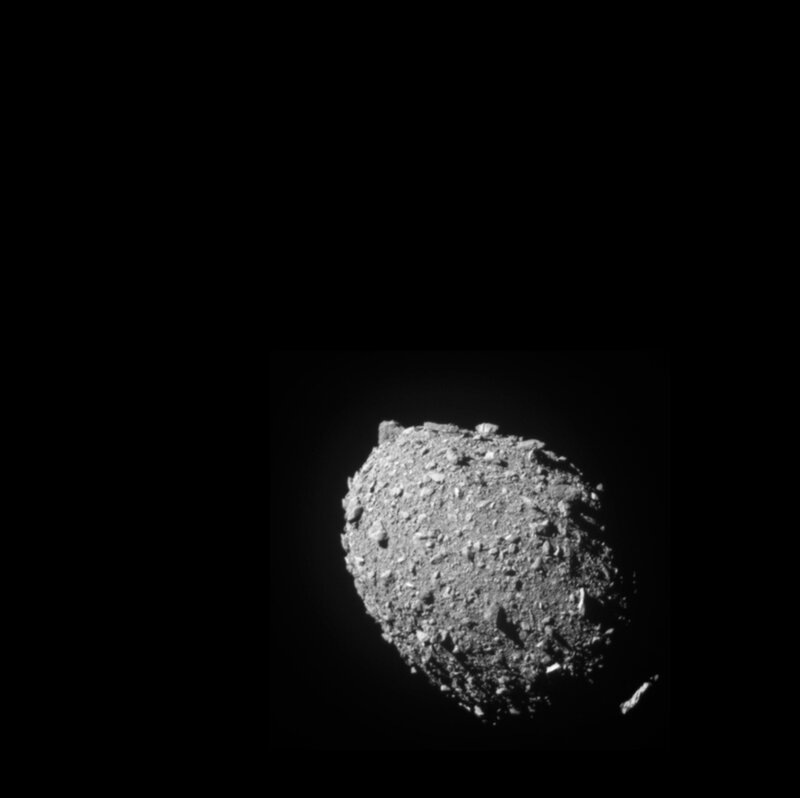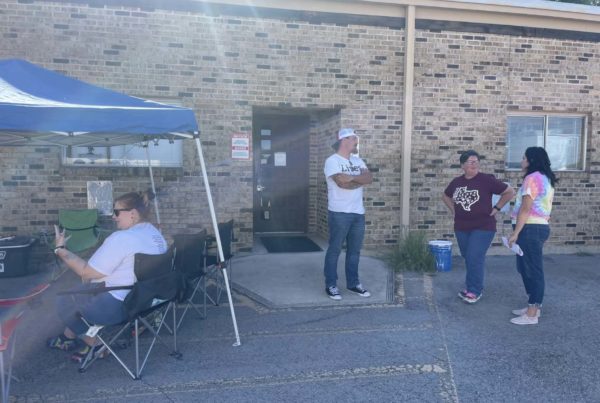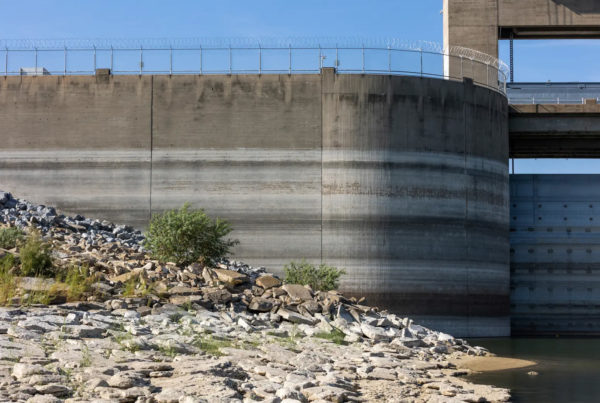NASA intentionally crashed a spacecraft into an asteroid moonlet on Monday, in an attempt to change an asteroid’s orbit. The experiment was a first demonstration of planetary defense – using the kinetic energy of the asteroid itself to propel it away from Earth, with a nudge from that earth-launched spacecraft.
James Walker is director of the Engineering Dynamics Department at Southwest Research Institute in San Antonio, and one of the scientists on the team that launched the Double Asteroid Redirection Test, or DART. He told Texas Standard that the experiment bombarded an asteroid that wasn’t coming near the Earth. But what NASA learns from the data will provide a roadmap for future planetary defense efforts. Listen to the interview above or read the transcript below.
This transcript has been edited lightly for clarity.
Texas Standard: So tell us a little bit about the outcome of the experiment, because it seems like, at least narrowly speaking, mission accomplished. The DART spacecraft hit the asteroid. Did it knock it off of its trajectory or no?
James Walker: So the first step of this experiment was the impact, which occurred on Monday night. Now we’re needing to gather more data to understand how effective it was at deflecting the asteroid, in particular, Dimorphos, which is the moon of the asteroid Didymos. So it will take a number of weeks for us to gather data in order to see how much change in velocity occurred to that moon’s orbit around the primary asteroid.
Talk a little bit about your team’s role in the DART mission.
So we know a lot about impact mechanics here at Southwest Research. We have a group that studies that. And so we have been looking at this question of how much the ejecta from the crater affects the momentum transfer, because the more ejecta that comes out of the crater and the higher the speed, the more momentum the spacecraft transfers to the asteroid and the more effective the strike is. We’ve been studying this for many years, both with computer simulations and with experiments. And so we’re looking to see what that multiplier is. That’s the purpose of this experiment. And we do tests here. We have a large two stage light gas gun that can shoot over six kilometers per second, which is very close to what the DART impact was Monday night. We’ve also looked at laboratory scale, what happens in these kind of impacts. But now we did, on Monday night, a full spacecraft-scale experiment.
And from what you saw, did it look very similar to what you’ve been observing in the lab?
Well, we don’t know as far as the momentum enhancement aspect, as far as what the asteroid surface looks like. We have done experiments with a variety of rocks. We did one with a surrogate for a rubble pile, and it looked like this was a conglomeration of rocks sitting together from the initial images.
One of the things that some experts are cautioning folks to keep in mind is that a lot of times we don’t see a threatening asteroid until it’s rather close to Earth. I’m curious about how much people can put confidence in this approach to protect the planet.
Well, the question of what’s out there has been looked at for many years with sky surveys, and it continues to be looked at. And as time progresses, with the multitude of telescopes we have looking up, we’re able to be pretty relatively assured that the bigger stuff, we know where it is. And we’re doing the sky surveys to get down to the smaller and smaller stuff. So at some point we’ll have a reasonable idea of what’s out there that could potentially intersect Earth’s orbit and how big it is. So that’s a matter of time looking, just looking up to see what’s in space around us. And once we catalog most of it, we’ll have a good idea what’s happening.
Let’s assume that this approach did, in fact, yield positive results. What would a planetary defense system look like? Because presumably you would need more than just one rocket at the ready.
Well, there are two aspects to this question, and they’re important things to consider, and that is the response time. It’s expected that in most cases, we would have a long time, as in decades, to be able to respond. In that case, you don’t have a rocket at the ready. It’s custom designed for the specific application. The question is, if you have a really short amount of information, can you respond? That’s actually quite a complicated question. And it’s one that really hasn’t even been addressed within the impact community and the planetary defense community. Most of the discussion has assumed, ‘let’s suppose we have some time to respond.’
So when people think about the value of this DART mission, I know it costs quite a large sum of money. All told, is the Earth a safer place?
Once we get the data back from the DART mission, which we don’t have yet, we’ll have a better understanding of how effective and efficient kinetic impactors are deflecting a celestial body like an asteroid. Once we know how effective and efficient it is, we’ll be able to make decisions on whether that’s a good choice for trying to deflect an asteroid. But I think it should be kept in mind: this potential for an asteroid strike on the Earth is a unique kind of a natural disaster in the sense that something like a tornado or a hurricane or an earthquake — we can’t do anything about those. But this kind is something that, if we knew enough ahead of time, we could actually maybe do something about it to reduce or eliminate the event.
And how much more time till you get the data from this particular experiment, the DART mission, and you can process it?
So we’re hoping to have the first preliminary data by the end of the year. It’s going to take quite a bit of telescope observation time to determine what the change in the speed of the moonlet going around Didymos was. And then we also need to estimate what the mass of that moon, Dimorphos, was. Given that, we’ll have an idea of what the beta is, which was how we refer to the momentum enhancement factor — how much more momentum was transferred to the body than the spacecraft brought with it. And that will give us an idea of what the efficiency is. And then I’m sure there will be some more and more detailed analysis in the subsequent years after that.














